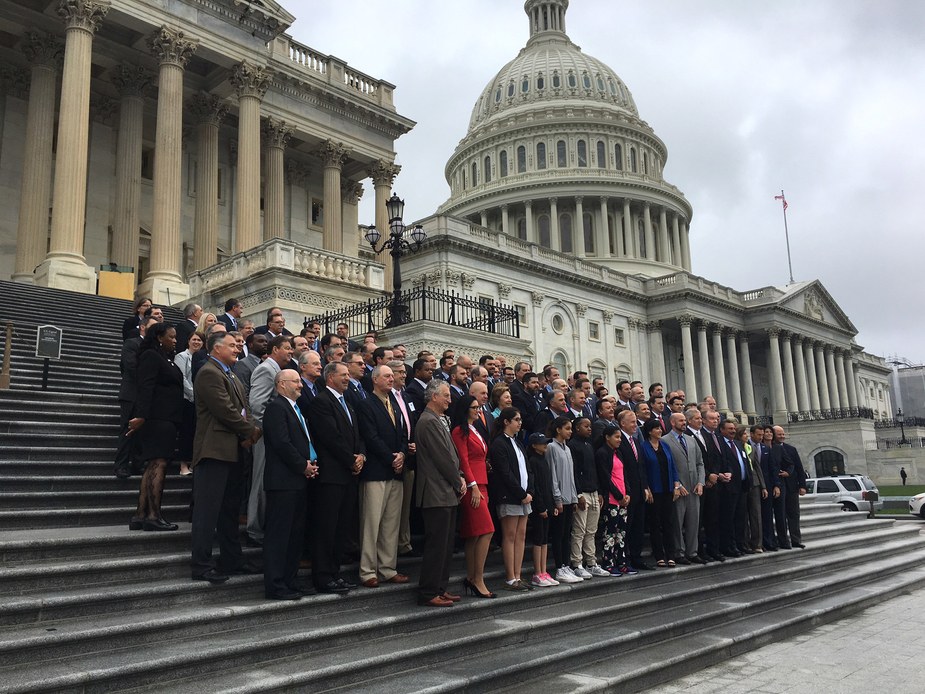By Ryan Herrington
On the eve of the 11th annual National Golf Day, industry leaders will arrive in Washington D.C, armed with new data that tangibly boosts their contention that golf is more than just a hobby for Americans but a major financial driver for the country.
For the fourth time since 2000, the World Golf Foundation has commissioned the U.S. Golf Economy Report, the latest numbers covering 2016. The report summarizes that the sport drove $84.1 billion in economic activity across the U.S., a 22.1-percent increase from the $68.8 billion seen in 2011, the year of the last report.
When golf’s total economic impact is calculated, the report touts an even more grandiose number, with the industry supporting $191.9 billion in output.
Steve Mona, CEO of the World Golf Foundation CEO, says this fresh data will help him and the rest of the nearly 200-person “We Are Golf” coalition descending on the nation’s capital advocate for golf’s needs during meetings on Wednesday with members of Congress and other governmental agencies.
“It helps us to legitimize golf as a sport and an industry,” Mona said. “I think some people still perceive it to some degree as a cottage industry or a pastime for a certain element of society. But that perception doesn’t match with reality, and it’s our job to help, for lack of a better term, to unwind that perception.”
In getting to the $84.1 billion number, the new report explores core golf facility metrics (operations, capital investments); revenues of professional golf tournaments, associations and player endorsements; charitable events; golf real estate value; and golf tourism. In every top-level segment, save for new-course construction, the industry saw economic gains in 2016 versus 2011.
Most notably, according to Mona, overall revenues from golf facility operations were up to $34.4 billion, a 2.9 percent increase from 2011 that comes despite a net decrease in facilities of 737 and the overall number of golfers in the U.S. remaining at 24 million.
“What it tells me is of the facilities that remain, they’re doing pretty well,” Mona said. “That’s not 100 percent across the board, but as a general rule, the ones that remain are in a better position as time goes on.”
The report calculates that the game employs 1.89 million people in the U.S. and pays them $58.7 billion in wages and benefits.
Interestingly, golf real estate was a segment that saw the largest-percentage gains from 2011, with new home construction measuring a financial uptick of 18.5 percent, sitting at $7.2 billion in 2016 versus $3.4 billion five years earlier. The current number is still below the $8.4 billion seen when the first U.S. Golf Economy Report was done in 2000 and below the high of $11.6 billion in 2005, but suggests a move in the positive direction.
Additionally, golf tourism saw an increased economic impact of $25.7 billion, up 4.6 percent from $20.5 billion in 2011 and nearly double the $13.4 billion from 2000.
Still to come in May will be the National Golf Foundation’s annual participation report, accounting for the number of golfers in the U.S. and play on-course and off-course, where participation is expected to see increases with the continued interest in Topgolf, Drive Shack and other “entertainment” venues.
Besides the rosy financials, Mona says industry leaders will use this year’s National Golf Day to once again lobby on golf’s behalf regarding a handful of legislative issues. Among them is the continued efforts to separate golf from other less savory industries (massage parlors, hot-tub facilities, tanning salons) that frequently are lumped together and often collectively denied funding when disaster relief bills are broad to votes.
Additionally, they’ll be discussing the negative impact golf faces from a change in how businesses can deduct entertainment expenses. In a late revision prior to Congress’ passage of the Tax Cuts and Jobs Act in December, and despite 11th hour lobbying efforts from the golf industry, a 50-percent tax deduction for most types of client-entertainment expenses was eliminated. The intent is to explain the large-scale negative impact this will have on the golf industry in hopes that revisions or exceptions can be made for the sport in the future.
Toward this argument, the We Are Golf contingent can use the numbers from the Golf Economy Report to directly show how much revenue the industry generates and how this could be muted if businesses reduce their investment in the game because of the new tax law. In that sense, the new report’s timing couldn’t be more perfect.
Says Mona: “It’s very significant to have this report and be able to use it in the best sense of the word.”









